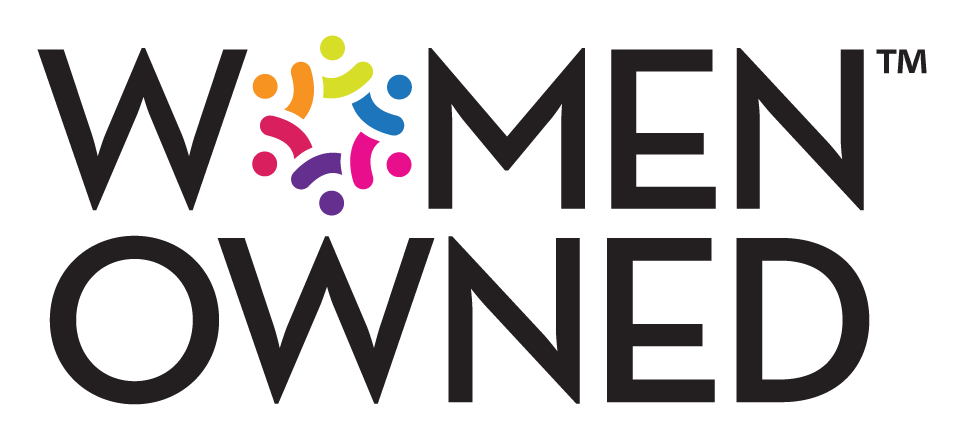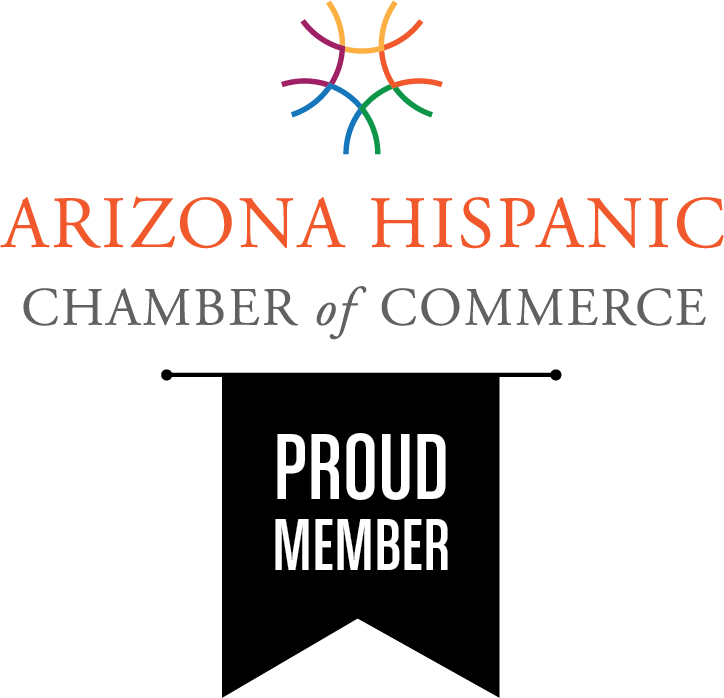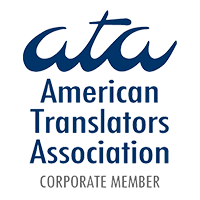Translation Services in Education: Tips for Translation Managers

In the first part of our series, we explained how translation services in education consist of three stages and how to build a functional baseline to ensure your language access program thrives:
- A clean and structured file management system and a semi-automated form and spreadsheet for request handling and tracking.
- A consolidated knowledge base paired with translation technologies (translation memories and termbases) to enhance your productivity and consistency.
With Part 2 of our Translation Services in Education series, we now shift the focus from the structure every district translation office should follow to how to now bring your team and stakeholders together and adapt your current resources to meet new demands.
Once your district translators start work, there are at least two specific events we identified which occur most frequently.
Be ready to address:
- Unexpected translation updates; and
- Queries from your district translators and external translation vendors
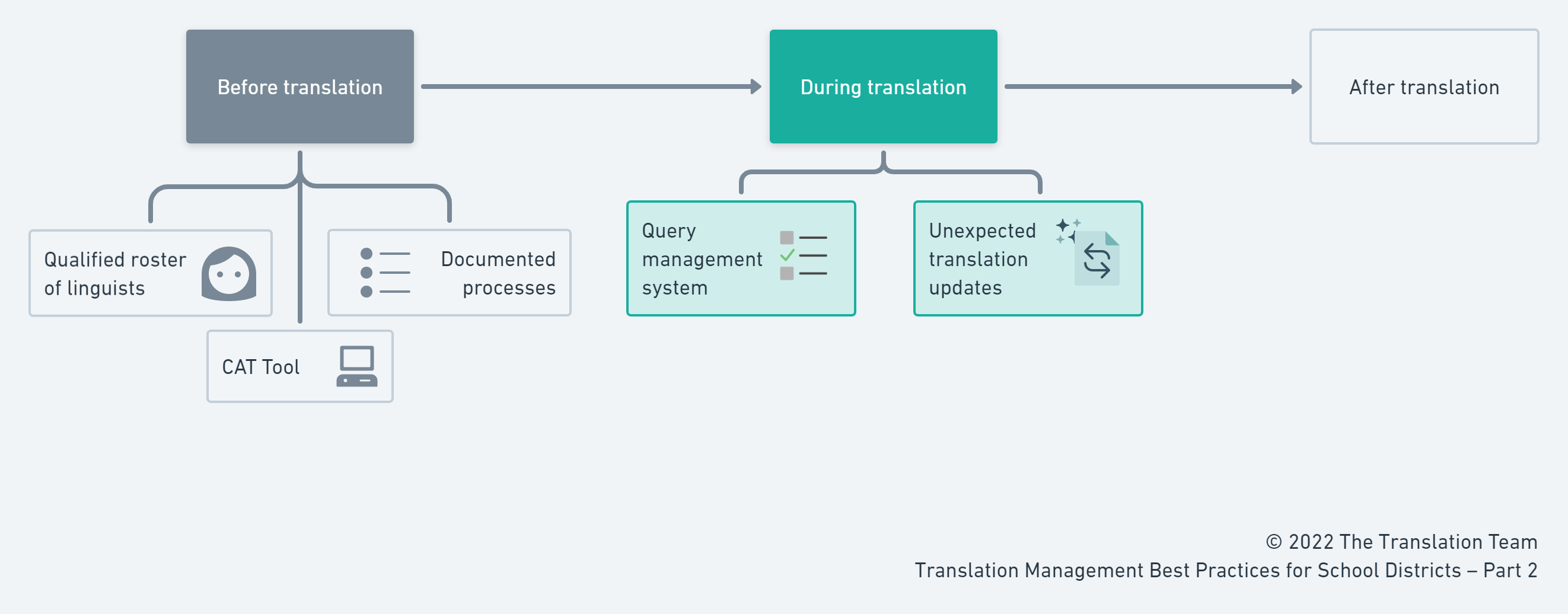
Unexpected translation updates
Your translators (in-house or external vendors) are halfway through a 45,000-word bilingual curriculum. It’s 4:30 p.m. on Friday, and the Curriculum & Instruction Department sends you an unexpected batch of tiny updates affecting at least 65% of your work.
Your requester also highlights that they won’t shift the deadline; in fact, they expect you to deliver as soon as possible.
How can you effectively address these updates and make it over the finish line?
It all comes down to four key questions:
- Are you using translation technology (such as a CAT tool)?
- What’s the word count of the new content?
- Is the native document format easy to edit without requiring technical expertise?
- Is the translation being produced in-house or through an external vendor?
The impact of translation technology on unexpected translation updates
Paraphrasing Austrian philosopher André Gorz, the ultimate goal of technology is to help us free up more time—from redundant tasks—to focus on meaningful activities.
You definitely aim for that when developing your translation services program in education settings.
Can you imagine how difficult it would be to figure out where the updates took place in the new documents, to then implement them across dozens of documents without making a mistake?
Fortunately, translation software has built-in translation memory capabilities to help us highlight what was already translated and what’s new.
Also, you can find solutions in the translation tech market that streamline document update processes so that you don’t need to do all the work manually.
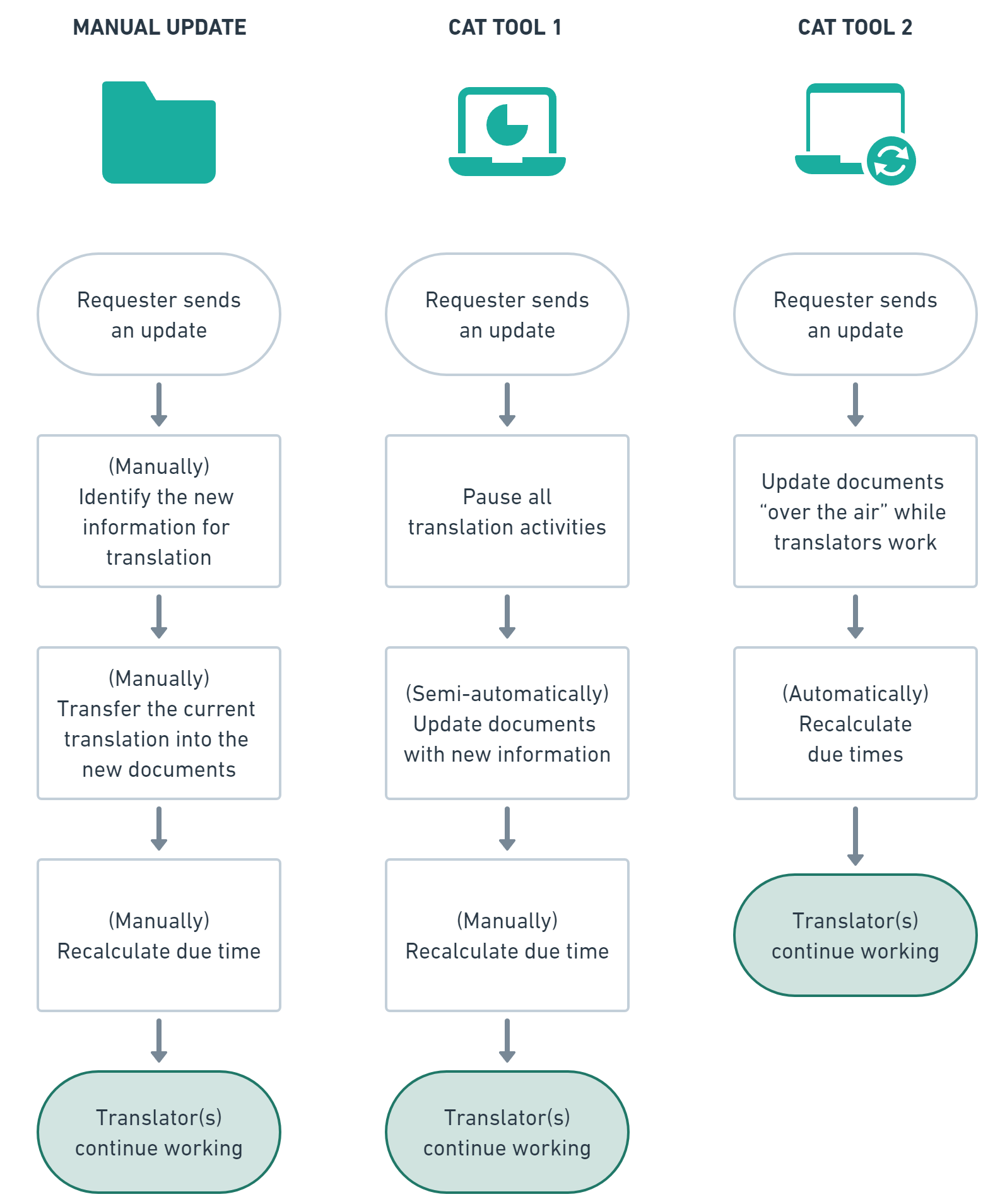
that speed up translation management during specific scenarios.
If you had a chance to read Part 1 of this blog series, you may remember that we emphasized the importance of implementing a computer-aided translation tool to increase your productivity and maintain a consistent voice in all your languages.
Still, the number of translation solutions in the market, with their varying levels of sophistication and automation is significantly vast (just look at the differences above!)
You might need some handholding to identify the one that will best handle the common scenarios you face (not to mention your budget) while working in your translation department. Feel free to reach out to us if you need help.
The impact of word count in unexpected translation updates
When there’s a lot of new content and the deadline is approaching (that ring a bell?), you need to take immediate action to ensure that:
- There is room to negotiate a potential deadline extension with the requester;
- You have the technology to assist you with the updates (we already talked about this)
- The resulting translation still meets the district’s standards despite the tight schedule (as an example, the newly translated content follows style guides like the rest of the content ); and
- You have a team ready to take on the extra work.
Let’s briefly address each action you can take and provide some suggestions.
Renegotiating with requesters
There’s no better translation than the one you completed with enough time.
Before saying “yes” to that unexpected content update, sit down with your requester and explain why is important to allocate more time for the work.
Chances are your state has additional legislation to support linguistically and culturally accurate translation services, which would support your argument.
Ensuring high-quality standards under pressure
Remember when we discussed keeping a knowledge base of all translation department operations? The same applies to linguistic resources such as style guides and handbooks.
In translation, there are unique events called “pauses” (Koehn, 2009) where translators interrupt their main task to focus on an alternative one, like thinking and researching.
In technical fields like special education (such as IEP, Section 504, and progress reports), translators may spend a considerable amount of time researching.
Consolidating an organized and comprehensive knowledge base with answers to the most common questions and linguistic challenges they might face will make their work much more efficient.
Be sure to share as many of these relevant resources as possible with your translators; doing so can potentially reduce their research time during translation, helping them make informed linguistic decisions based on your district’s context.
Onboarding new translators
What if one of your in-house or external translators can’t take on more work?
Do you remember in Part 1 of the series when we discussed keeping a database of vetted translators who specialize in education? Now it’s time to dust that off and plan accordingly.
This is a prime illustration of how your department’s organization, structure, and resources—developed mostly before the translation phase—deeply impact the subsequent stages of the translation cycle.
The impact of native documents’ format and editability in unexpected translation updates
Another variable when working with ongoing updates is how translation-friendly the native format is.
Is it a series of InDesign brochures? Perhaps a bunch of Google Slides or PowerPoint presentations with images? Or maybe the latest e-learning web app your school just purchased?
The rule of thumb is as follows: The simpler the format, the easier the update.
Images and complex documents will require extra file preparation efforts, but chances are you can rely on certain internal staff in your district.
For instance, we know of school districts with marketing or communications departments that employ graphic design professionals who have helped with text extraction (file preparation) or translation layout (desktop publishing).
If your district works with computer-aided software, you’ll be glad to know that most tools support the least expected formats, including optical character recognition for basic images.
In-house vs. external translators during ongoing updates
If you work with external vendors, reach out to your account or project manager and provide them with all the new instructions, reference documents, and source files they need to help you complete this updated translation request in time.
Bear in mind that time zones might play against you. For example, if it’s 4:30 p.m. and your district is on the West Coast while the translation provider is on the East Coast.
Thus, make sure your vetted vendor database has a good regional balance of independent professionals and trusted translation companies who can react quickly to your new demands.
Lastly, it’s worth mentioning that establishing multiple communication channels can improve your vendor’s response rate. Aside from email and phone, you could also have them on Skype, WhatsApp, Telegram, and other chat apps.
A query management system as a communication channel for translators and requesters
If you work in a large district and collaborate with multiple internal and external providers for translation requests, chances are that they have sent you questions or asked for advice on how to approach specific grammar, terminology, or stylistic issues.
In our experience, this is especially true for bilingual curriculum translation requests, and we’ve also seen it with large special education projects involving multiple knowledge areas, including PT, OT, SLP, psychology, and others.
How can you effectively address all their questions in an efficient way that also includes the necessary stakeholders, such as the authors of those reports, evaluations, or handouts?
We propose the least sophisticated—yet the handiest and easy-to-master query management system: A spreadsheet.
Whether you’re a Microsoft or Google district, Excel Online and Google Sheets have all the necessary features to create your own query spreadsheet.
A simplified query management spreadsheet formula
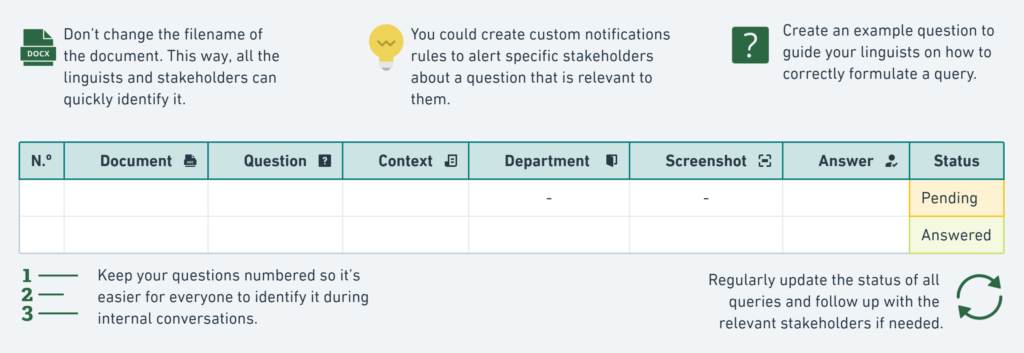
and stakeholders’ inboxes quiet, but also centralizes all the knowledge in one place.
The query spreadsheet formula is straightforward:
- Use the template above (feel free to customize it).
- Make the spreadsheet available in the cloud
- Share the spreadsheet with all stakeholders
- Instruct your translators to complete their designated fields.
- Leave an example of a properly formulated and answered question.
- Activate custom email alerts whenever someone posts a new query.
Are you craving for something more creative than a spreadsheet? We’ve got you covered, as Joshua, our Solutions Architect, recently experimented with a digital post-it mural. Check out his LinkedIn post to learn more.
After the request is completed, this information will be kept in a special place. Yes, you guessed right: Your knowledge base docs.
We will cover the post-mortem process in the final part of our series, so make sure to subscribe to our newsletter and be the first to check it out.
Give yourselves a pat on the back
While we know for a fact that it can positively impact the lives of immigrant students and their families, language access in educational settings is often an overlooked area.
Providing these students access to the same materials as their English-dominant peers, and as though these were originally produced in their mother languages, creates a transformative learning experience.
With each in-language report, handout, brochure, e-book, app and slide your leadership and the technical and linguistic skills of your translators, whether in-house or external, come to life.
Whether you are on a solo mission in your school district or have a team of several translation professionals, don’t forget to give yourselves a pat on the back since none of this work would be possible without your motivation to continually improve your processes.
Congratulations! You have successfully finished reading about the during translation phase.
For the final part of our series (coming in late June, stay tuned!), you will learn how to integrate and consolidate the lessons learned from the before and during moments.
Could this article help a colleague in need?
Help us spread the word on translation management best practices for school districts!




